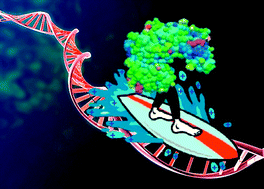Effective interaction between charged nanoparticles and DNA
Abstract
We investigate the effective interaction mediated by salt ions between charged

* Corresponding authors
a UPMC Univ Paris 06, UMR CNRS 7195, PECSA, F-75005 Paris, France
b
UPMC Univ Paris 06, UMR 7600, Laboratoire de Physique Théorique de la Matière Condensée, F-75005 Paris, France
E-mail:
barbi@lptl.jussieu.fr
c CNRS, UMR 7600, F-75005 Paris, France
We investigate the effective interaction mediated by salt ions between charged

 Please wait while we load your content...
Something went wrong. Try again?
Please wait while we load your content...
Something went wrong. Try again?
F. Paillusson, V. Dahirel, M. Jardat, J. Victor and M. Barbi, Phys. Chem. Chem. Phys., 2011, 13, 12603 DOI: 10.1039/C1CP20324J
To request permission to reproduce material from this article, please go to the Copyright Clearance Center request page.
If you are an author contributing to an RSC publication, you do not need to request permission provided correct acknowledgement is given.
If you are the author of this article, you do not need to request permission to reproduce figures and diagrams provided correct acknowledgement is given. If you want to reproduce the whole article in a third-party publication (excluding your thesis/dissertation for which permission is not required) please go to the Copyright Clearance Center request page.
Read more about how to correctly acknowledge RSC content.
 Fetching data from CrossRef.
Fetching data from CrossRef.
This may take some time to load.
Loading related content
